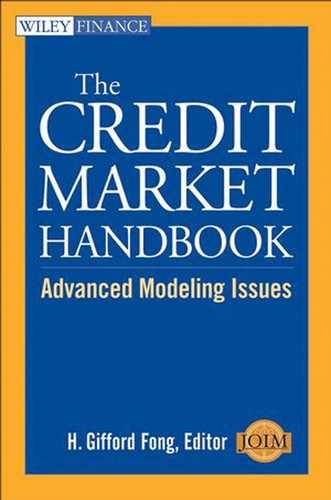Contents
Estimation of the State Variable Process Parameters
Analysis of the Time Series Properties of the Parameters
Analysis of Fama–French Four-Factor Model with No Default
Analysis of a Bubble Component (P/E ratio) in Stock Prices
Analysis of the Default Intensity
Relative Performance of the Equity Return Models
Comparison of Default Intensities Based on Debt versus Equity
CHAPTER 2
Predictions of Default Probabilities in Structural Models of Debt
Hayne E. Leland
Structural Models and Default Risk
The Default Boundary in Exogenous and Endogenous Cases
The Default Probability with Constant Default Barrier
Calibration of Models: The Base Case
Matching Empirical Default Frequencies with the L-T Model
Matching Empirical DPS with the L-S Model
Some Preliminary Thoughts on the Relationship Between the KMV Approach and L-S/L-T
CHAPTER 3
Survey of the Recent Literature: Recovery Risk
Sanjiv R. Das
Recovery in Reduced-Form Models
Data and Outline of Methodology
Estimating Transition Intensities in Two Dimensions
One-Dimensional Hazards and Marginal Integration
Transitions: Dependence on Previous Move and Duration
CHAPTER 5
Valuing High-Yield Bonds: A Business Modeling Approach
Thomas S. Y. Ho and Sang Bin Lee
Merton, Vasicek-Kealhofer, and Hull-White Models
Data and Empirical Methodology
Sample Portfolios with Zero Recovery Fractions
Sample Portfolios with Nonzero Recovery Fractions
CHAPTER 9
Correlated Default Processes: A Criterion-Based Copula Approach
Sanjiv R. Das and Gary Geng
Copulas and Features of the Data
Determining the Joint Default Process
Simulating Correlated Defaults and Model Comparisons
Appendix: The Skewed Double Exponential Distribution
